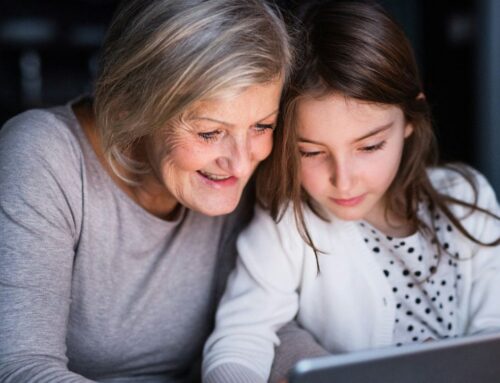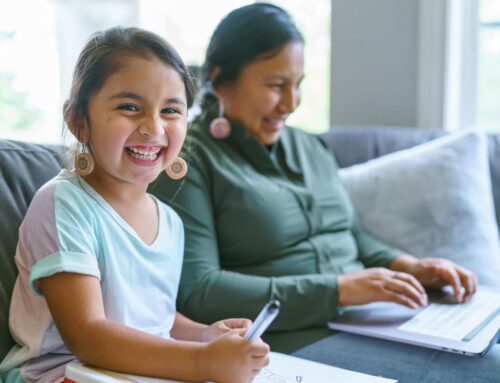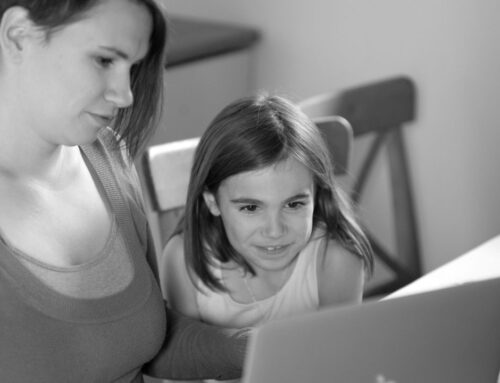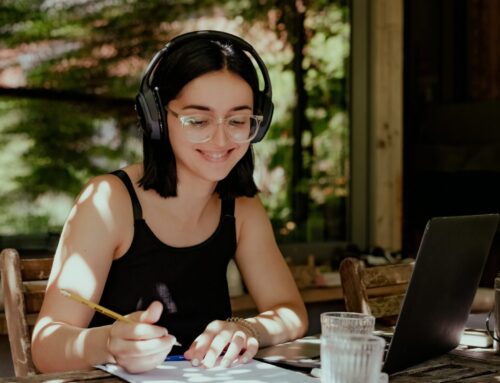SelfDesign Learning Community is a technology-enabled school where learning takes place on and off the computer. Although many families spend much of their time learning at home and in their community, when SelfDesign learners do use technology for learning, we take their online safety very seriously.
Learner safety sits at the core of our operations and programs. We have rigorous privacy and online safety policies, education and supports in place that align with legislation and regulatory policies, such as the Personal Information Protection Act (PIPA). Learner safety also guides how we design our systems, platforms, procedures, protocols, logins and permissions.
In addition, our Family Services, Educator Services, Support Education Services, Educational Program and Information Technology teams work together to help ensure learner safety online.
A team approach
“The entire educational program is built on a foundation of technological safety and security,” says SelfDesign Family Services Team lead Clarissa Tufts. “Then, in terms of online safety, we work with parents and caregivers, as well as with the learners. Parent involvement in our kindergarten to grade 9 program helps to ensure that online safety is a team approach.”
In those grades, the parent is responsible for gauging their child’s readiness for different levels of online access, then works with the learner’s educator to help determine the logins, permissions and parameters needed. The parent’s main role is to lead the way with the technology being used for learning. This includes being the primary point of contact with the learner’s educator.
“As the learner grows, we’re scaffolding them to take more and more responsibility for their learning,” Clarissa says. “For example, in grade 6, learners have an opportunity to start engaging in online workshops and meetings with their peers. Those activities have safety aspects embedded right into them.”
As learners age and journey through the kindergarten to grade 12 program, they become involved in an increasing variety of online offerings. These can include virtual field trips, online camps and events, Genius Hour, Minecraft Club, Grade 8/9 Circles, Grade 10–12 Themes and courses, Indigenous Ed Connect, real-time meetings, and more. Learners in our grade 10 to 12 program can also take courses like Digital Communications 11 and New Media 11. At each event, SelfDesign facilitators directly address online safety and follow up through learner orientations, program agreements, modelling, reminders, activities and so on.
“We strive to build our learners’ skills and abilities with online safety and digital literacy from Day One, so that these skills transfer to all areas of their lives,” says SelfDesign Educational Program Team Lead Janice Green. “We do this through real-time online events for our younger learners – parents often accompany their learners to these events – where we begin by modelling online etiquette and reviewing safety procedures and conduct.”
Parents’ continuing involvement in their children’s learning remains paramount – especially when it comes to online safety and the quickly changing social media and Internet environments. That’s why SelfDesign supports both learners and parents with online safety information and education.
Safer Schools Together, hosted by SelfDesign
We also host workshops and presentations to help our community members learn more about how to keep themselves safe online – whether they’re using SelfDesign’s secure platforms or accessing other websites, social media and online applications.
For example, 64 learners, parents and caregivers recently took part in special online presentations on digital safety by Safer Schools Together, hosted by SelfDesign. Safer Schools Together is a North American leader in providing schools with up-to-date information, resources and training about online safety. It works to provide parents, kids and educators with tools and strategies to prevent and avoid unsafe online interactions, to protect themselves online, and to become digitally responsible citizens.
The presentations addressed everything from how to be a good digital citizen to the criminal consequences of cyberbullying. Learners, parents and educators learned about online etiquette, the criminal and social consequences of cyberbullying and the possession and distribution of intimate images (sexting), and how to recognize and respond to cyberbullying. They learned about self and peer exploitation, good digital media habits, oversharing, digital addiction, digital piracy and plagiarism.
They also discussed their own concerns about learners’ use of social networking sites and smartphones.
Many of those who attended said they found the presentations informative and eye-opening. A number of parents reported that they were struck by how the information emphasized that understanding the technology and safety measures alone isn’t enough to keep kids safe online – that positive, supportive relationships and ongoing, open communication between parents and children are equally, if not more important.
To help families explore further and learn more about online safety, SelfDesign has added new resources related to this important topic to the Learning Experience Library and to the Family Services Virtual Brochure Rack, found in SelfDesign’s online Family Resource Centre.
Technology is a tool for learning
“At SelfDesign, we consider technology a tool that can support learning and, like any tool, you find out how it works so you can use it to explore and further your passions,” Clarissa says. “But we need to understand it, we need to respect it, and we need to use it in a way that supports and facilitates learning, not dictates or controls it. Using technology isn’t the goal. Learning is.”
Everyone around a learner is responsible for encouraging and furthering safety online. As one member of the team that supports learners, SelfDesign Learning Community provides safe platforms, protocols and procedures, and we share good practices. We also encourage learners to reach out to their educators and to Family Services if they ever feel unsafe or uncomfortable online or if they encounter any online safety concerns or issues.
For more information about online safety at SelfDesign, please email familyservices@selfdesign.org.







